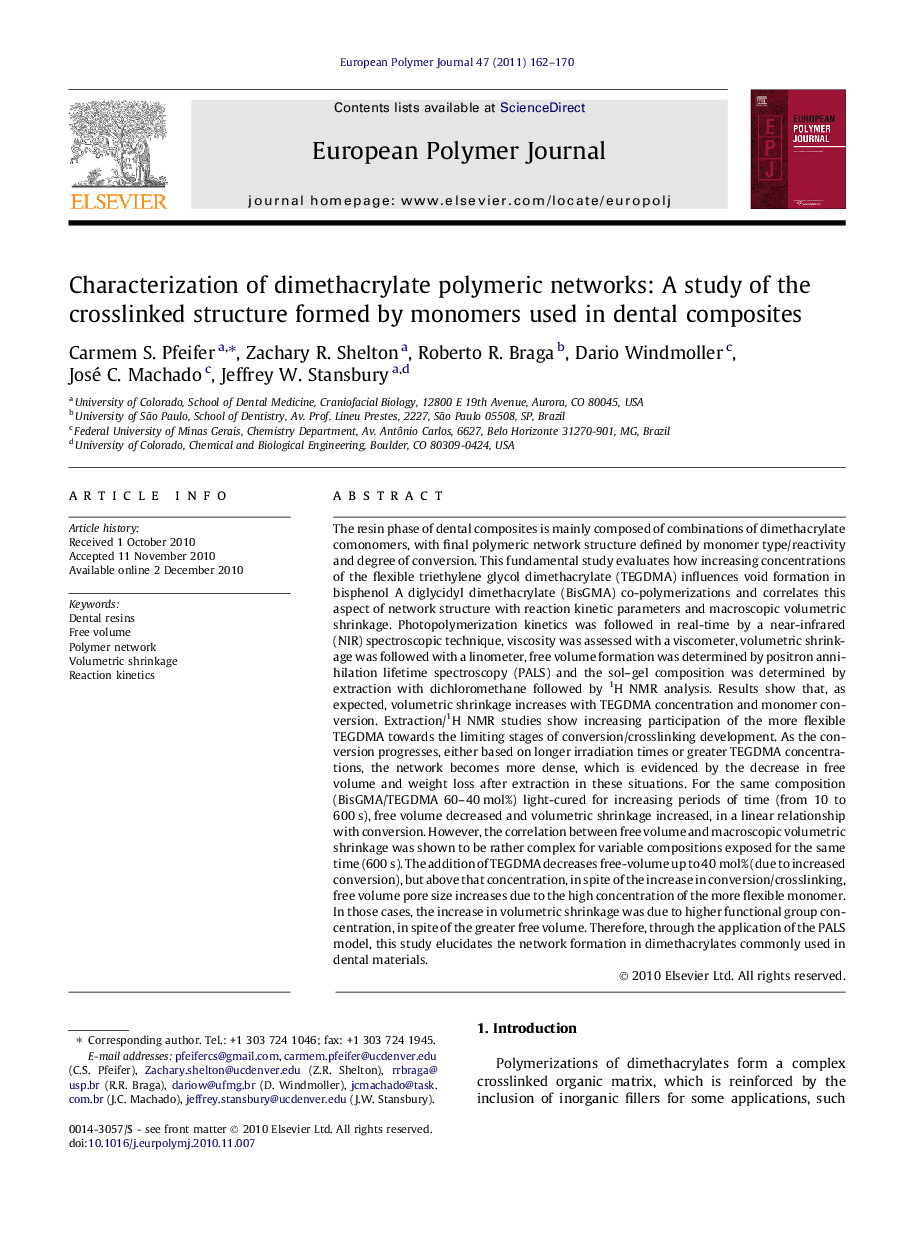| کد مقاله | کد نشریه | سال انتشار | مقاله انگلیسی | نسخه تمام متن |
|---|---|---|---|---|
| 1400687 | 984637 | 2011 | 9 صفحه PDF | دانلود رایگان |

The resin phase of dental composites is mainly composed of combinations of dimethacrylate comonomers, with final polymeric network structure defined by monomer type/reactivity and degree of conversion. This fundamental study evaluates how increasing concentrations of the flexible triethylene glycol dimethacrylate (TEGDMA) influences void formation in bisphenol A diglycidyl dimethacrylate (BisGMA) co-polymerizations and correlates this aspect of network structure with reaction kinetic parameters and macroscopic volumetric shrinkage. Photopolymerization kinetics was followed in real-time by a near-infrared (NIR) spectroscopic technique, viscosity was assessed with a viscometer, volumetric shrinkage was followed with a linometer, free volume formation was determined by positron annihilation lifetime spectroscopy (PALS) and the sol–gel composition was determined by extraction with dichloromethane followed by 1H NMR analysis. Results show that, as expected, volumetric shrinkage increases with TEGDMA concentration and monomer conversion. Extraction/1H NMR studies show increasing participation of the more flexible TEGDMA towards the limiting stages of conversion/crosslinking development. As the conversion progresses, either based on longer irradiation times or greater TEGDMA concentrations, the network becomes more dense, which is evidenced by the decrease in free volume and weight loss after extraction in these situations. For the same composition (BisGMA/TEGDMA 60–40 mol%) light-cured for increasing periods of time (from 10 to 600 s), free volume decreased and volumetric shrinkage increased, in a linear relationship with conversion. However, the correlation between free volume and macroscopic volumetric shrinkage was shown to be rather complex for variable compositions exposed for the same time (600 s). The addition of TEGDMA decreases free-volume up to 40 mol% (due to increased conversion), but above that concentration, in spite of the increase in conversion/crosslinking, free volume pore size increases due to the high concentration of the more flexible monomer. In those cases, the increase in volumetric shrinkage was due to higher functional group concentration, in spite of the greater free volume. Therefore, through the application of the PALS model, this study elucidates the network formation in dimethacrylates commonly used in dental materials.
Figure optionsDownload as PowerPoint slide
Journal: European Polymer Journal - Volume 47, Issue 2, February 2011, Pages 162–170